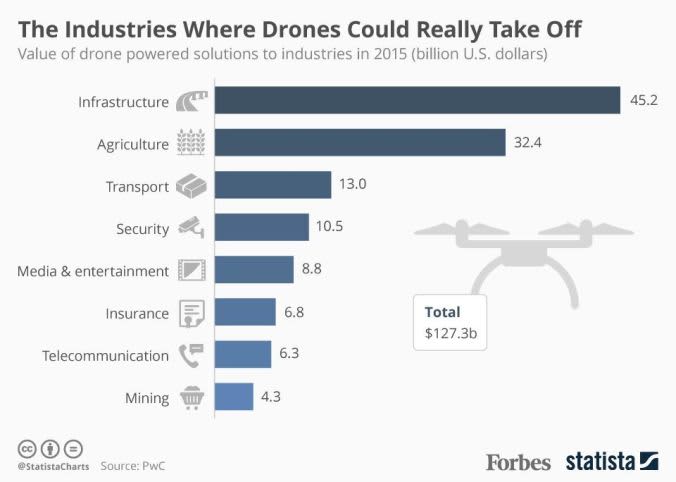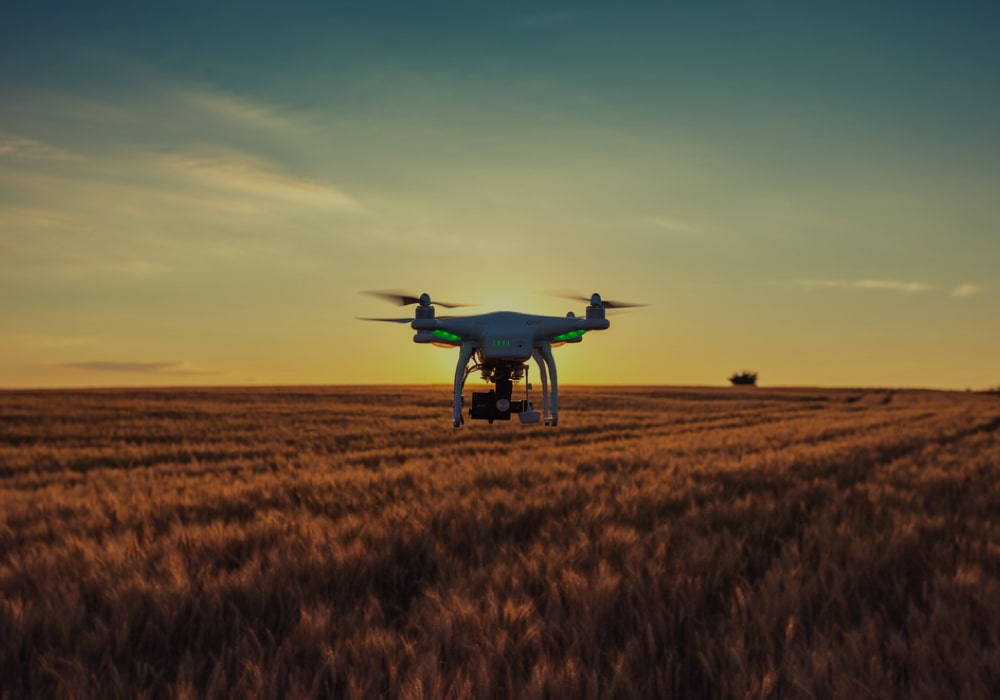I saw farmers spraying pesticides in extreme weather, where I could barely stand
I was in the final year of my engineering studies, when I joined a group of batchmates on a project assignment and traveled to a village in Uttar Pradesh. We wanted to study the problem of farmers in the village and identify solutions that can help them. When we started interacting with some of the farmers, we learnt that they were completely unaware of how technology that can help them do better farming and help improve productivity. Over these conversations, we shared with them about the latest technologies that can make a difference in their lifestyle and can be used for better farming.
I saw few farmers spraying pesticides manually with their hands, on hot summer days, in extreme weather conditions, where I could barely stand by for a minute. I went to one of them and said, “DRONES can help doing your job. Sprinkler drones which can be controlled sitting in the shade, can evenly spray pesticides all over the crops, in a very small duration of time”.
The farmer, taken by surprise asked, “Is it possible? If so, wish you best of luck.”
Agricultural drones, aircrafts for agriculture
An agricultural drone is an aircraft that can be remotely controlled and made to perform certain important everyday tasks such as – crop monitoring, soil analysis, nutrient spraying, seeding & planting etc with scientific precision and accuracy, which makes farmers more efficient and significantly brings down the cost of manpower. Drones carry various tools including high resolution cameras, infrared / thermal sensors. Ground penetrating RADAR, could even measure soil conditions and suggest actions.
Technology can play an important role in holistically advancing the agriculture industry and integrating solutions & initiatives into one unified whole, encouraging deeper collaboration between governments, technology, leaders and farmers.
It’s time for Agropreneurs to embrace such game changing innovations, maximize productivity and reap the benefits of living in a digital age.
Why sprinkler drones?
Sprinkler drones can save a farmer’s time, money and energies. It takes a human worker a full day to cover 0.65 acre of fields. Now, that can be done with a drone in just 2 minutes. A drone can cover 65-80 acres of fields in one day and can be programmed to spray effectively – reaching the lower parts of the crops and underneath the leaves.
We no longer need to worry about having a lack of farming skills or labour capacity, when emergencies occur.
With the DJI agriculture management platform by Dà-Jiāng Innovations Science and Technology Co Ltd we can automate sprinkling, check the status of these unmanned aerial vehicles (agricultural drones) as well as calculate the extent of the fields covered. Drones will serve more farmers in need. Agricultural Drone technology will give the agriculture industry a high-technology makeover, enabling planning and strategy based on real-time data gathering and processing. PwC estimates the market for drone-powered solutions in agriculture at $32.4 billion.

Smartphones and mobile apps
Smart farming through mobile apps can easen the life of a farmer. Farmers can study data, take informed decisions and perform important tasks from anywhere, at any point of time. The most important challenge is to develop an app which is user friendly and easy to use, since most of the farmers in rural areas may not be tech savvy. With these technologies, farmers can be educated about opportunities across the industry, from yield optimization, fertilizer management, food safety and connecting the market.
With the invention of smartphones, farmers can be assisted with a mobile app which enables them to be more productive and more accurate while in the field and off the field. For example, an app could help farmers manage grass procurement, by suggesting the cheapest feed available for their livestock. You will no longer need paper to do this. An app could also help the farmer more accurately calculate the amount of feed to be given to animals, to avoid obesity and health problems which can be caused by under or overfeeding. Agricultural players can drastically improve their efficiency using mobile and cloud platforms.
As featured on MIT Technology Review, here are some things Drones can do.
- Soil and field analysis: Drones can be instrumental at the start of the crop cycle. They produce precise 3-D maps for early soil analysis, useful in planning seed planting patterns. After planting, drone-driven soil analysis provides data for irrigation and nitrogen-level management.
- Planting: Startups have created drone-planting systems that achieve an uptake rate of 75 percent and decrease planting costs by 85 percent. These systems shoot pods with seeds and plant nutrients into the soil, providing the plant all the nutrients necessary to sustain life.
- Crop spraying: Distance-measuring equipment—ultrasonic echoing and lasers such as those used in the light-detection and ranging, or LiDAR, method—enables a drone to adjust altitude as the topography and geography vary, and thus avoid collisions. Consequently, drones can scan the ground and spray the correct amount of liquid, modulating distance from the ground and spraying in real time for even coverage. The result: increased efficiency with a reduction of in the amount of chemicals penetrating into groundwater. In fact, experts estimate that aerial spraying can be completed up to five times faster with drones than with traditional machinery.
- Crop monitoring: Vast fields and low efficiency in crop monitoring together create farming’s largest obstacle. Monitoring challenges are exacerbated by increasingly unpredictable weather conditions, which drive risk and field maintenance costs. Previously, satellite imagery offered the most advanced form of monitoring. But there were drawbacks. Images had to be ordered in advance, could be taken only once a day, and were imprecise. Further, services were extremely costly and the images’ quality typically suffered on certain days. Today, time-series animations can show the precise development of a crop and reveal production inefficiencies, enabling better crop management.
- Irrigation: Drones with hyperspectral, multispectral, or thermal sensors can identify which parts of a field are dry or need improvements. Additionally, once the crop is growing, drones allow the calculation of the vegetation index, which describes the relative density and health of the crop, and show the heat signature, the amount of energy or heat the crop emits.
- Health assessment: It’s essential to assess crop health and spot bacterial or fungal infections on trees. By scanning a crop using both visible and near-infrared light, drone-carried devices can identify which plants reflect different amounts of green light and NIR light. This information can produce multispectral images that track changes in plants and indicate their health. A speedy response can save an entire orchard. In addition, as soon as a sickness is discovered, farmers can apply and monitor remedies more precisely. These two possibilities increase a plant’s ability to overcome disease. And in the case of crop failure, the farmer will be able to document losses more efficiently for insurance claims.
What Codewave can do to advance agriculture?
There’s huge responsibility on technology leaders and app developers of today, to empower people and businesses in the agriculture industry, all stakeholders participating in the economy, including farmers, fertilizer & agriculture equipment companies, encouraging them to be open for technology led advancements.
Codewave, brings unique collective potential, digitization capabilities and nurtured talent to help the government, organizations and individuals build advanced, intelligent automation systems; empower Agropreneurs and businesses in agriculture take better decisions with data; enable farmers to be more entrepreneurial, responding better to risks and adversities and do much more.
Here are few advancements with technology we predict, where the industry is heading towards:
- Opportunities for better farming and intelligent automation where possible
- Opportunities for farmers to better manage livestock and animal health
- Opportunities for farmers to transact without middlemen in:
a. Procurement of resources & tools online
b. Supply of produce to consumers online - Opportunities for farmers to avail quick loans from online NBFCs, on basis of historical data of farming health and ability to respond to adversities
Codewave is a design thinking led digital transformation company enabling organisations with playful innovation using AI & ML, IoT & Edge, AR, VR, Cloud, Blockchain, and Data.







